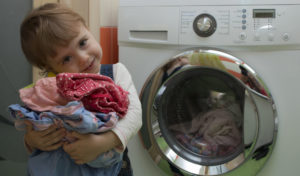“No” is one of the most common words that we use when talking to our children. Unfortunately, as this article from psychology today explains, “No” is actually the “most dangerous word in the world”! It is really important for children’s self esteem, (and their perception of the world in general) to experience more positivity from us, including ‘Yes’ statements, rather than hearing ‘No!’ and other forms of negativity.
So how can we reduce the number of of times that we say “No” (or use other negative statements) to our kids?
Here are 5 alternatives to “No” and other typical negative statements:
1. Redirect positively:
Resist the urge to say ‘No’ when your child wants something instead – try to redirect their request to a different time or suggest a different activity.
For eg. if your child asks you: “Mum, can we go to the park?”
INSTEAD OF: “No, it’s too late”, TRY: “Sure, we can go tomorrow”
Or if your child says “Can I watch TV?”
INSTEAD OF: “No you can’t” TRY: “Let’s play a game of snap together”
2. Ask your child a question:
For example, if your child says: “Dad, can I have an ice-cream?”
INSTEAD OF: : “Just before dinner? No way! ”, TRY:“What do you think?” or “Is it time to have an ice-cream”?
You will be surprised by how empowering your child with a question often leads them to have a rational response, including admitting that their request isn’t appropriate at that particular moment!
3. Turn a “negative limit setting” into a positive one:
Set limits positively by turning a negative into a positive.
INSTEAD OF: “No cycling in the house”, TRY THIS: “We cycle our bikes outside”.
INSTEAD OF: “Stop standing on the chair”, TRY THIS: “Chairs are for sitting”
INSTEAD OF: “Don’t run!”, TRY THIS: “Slow down”
4. Offer an alternative:
Some kids can’t stop themselves from doing something simply because they don’t know what to do instead.
INSTEAD OF: “Stop hurting the dog”, TRY THIS: “Gently pet the dog”
INSTEAD OF: “Don’t slam the door”!, TRY THIS: “Please close the door gently, would you like me to show you how?”
5. Give them a choice:
Choices are always the best prevention to power struggles and give your child control over their lives. For eg, if your child is running around the house.
INSTEAD OF: “No running in the house”, TRY THIS: “You can run all you like outside or you can walk around the house.
These are just a few examples of our Best of Parenting Tools. You can find more ideas and solutions to typical parenting challenges in our book ‘Kids Don’t Come With a Manual – The Essential Guide to a Happy Family Life‘.












































